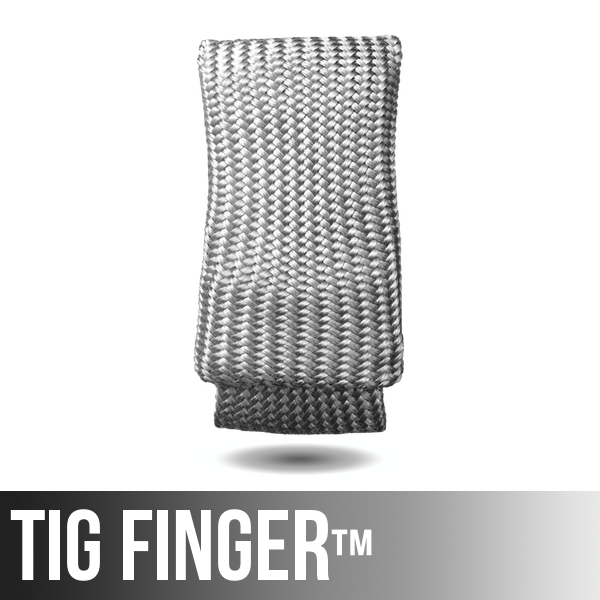Video Transcript
How to TIG Weld Aluminum: Part 3 – AC Frequency Settings
Hey, Jody here with WeldingTipsandTricks.com. Today is Part Three of a how to tig weld aluminum series. In Part One, I asked for questions and comments. One of the most frequently asked questions was, “What about AC frequency? Can you explain where you would want to use certain frequency settings?” A lot of newer tig inverters have this setting. Today I’m going to take a look at that, and try to answer some of the questions that came in on AC frequency settings, where do you use a low frequency, where do you use a higher frequency setting, and what’s a good all around setting that will work for most everything. Let’s do it.
We’re going to start off using the lower frequency settings here, and this is a 50 hz on an outside corner joint on 1/8 inch thick material, and I’m using a rounded tip here. I’m going to be using 3/32 electrode with a rounded tip, and only about probably 14, 15 CFH on the argon flow, 100% argon. See, the arch starts on a rounded tip aren’t that good. They wander sometimes, but on something thick like this, it doesn’t really make a lot of difference. But this kind of helps kind of fan the arch out, and it wraps that puddle around both corners the way you would want it to on an outside corner like this, at least most times, anyway. There’s always an exception to the rule. About probably 125 amps here, a little bit hotter here, and I’m just showing what it’s like if you want to really sink it in and get penetration on the other side.
All right, another similar joint is that you just took these pieces of angle and put them back to back, and you wanted that bead to wrap all the way around both ends. It works out just great. So old transformer machines are great for this kind of stuff. They’re great for everything, to be honest. We’ll see some more, different frequencies in just a minute. This is an aluminum casting repair that I did at JD’s shop on a jet boat pump, outboard motor jet pump, and for castings, where you need a lot of heat but you don’t necessarily want to penetrate, you need heat just because it’s thick. But you don’t want to penetrate into that casting and cook out all kinds of oil and impurities, and so here I’m just walking that 50 hz up, letting the cleaning action work its thing, boil some oil out of that part before I ever start puddling. Now, once I get the cleaning done, then I start puddling a little bit, and I’m just trying to wash it like a braise operation, just barely flow metal, not try to bring out any impurities.
Okay, let’s go to higher frequencies now. Here’s a good application, a thin T joint. This is a T joint test commonly given for aerospace type jobs, and the criteria is, here, you’ve got to penetrate all the way into that corner, into the root, but you can’t really suck back. You can’t really melt back. You can melt through a little bit, but you can’t suck back. So the 250 hz helps you, if you do melt through, it helps you punch it through instead of suck back. That was my experience, anyway.
All right, this is an 063 lap joint, and I’m going to start off using 60 hz here, just to show the difference between 60, 120 and 400. See, this sounds kind of like a transformer machine. It’s very similar to using like a [inaudible 00:03:21] 250 or a Lincoln Tig 175. As long as I keep my arch tight and do everything right, it comes out pretty good. I think I’ve go an AC balance set on close to 70 here for all these joints. Notice that when I get to 120 hz here, the Miller tells me Pro, and that’s the Miller basically saying they feel like 120 hz is the best all around setting to start with. And I kind of agree. It’s a really good all around setting. I might even say 100 hz would be a better all around setting. This is 120 hz, see it’s not terribly annoying to listen to. It did seem to actually pinpoint heat a little bit better, and it seemed to pick up the travel speed a little bit. That could just be me, because this is the second joint I ran, I was kind of getting a little bit more in the groove there. But it’s working out pretty well.
Overall appearance, eh, I bobbled a little bit, probably just me. Now, going all the way up to 400 hz. This is annoying to listen to. I’m telling you, I would not want to do this all day long, like having a mosquito buried in your ear drum. I would be looking for a different vocation if I had to this all day long, I think. The differences are subtle. It sounds way different, but to me it’s not doing anything a whole lot different than the 120, just annoying to listen to. I think that if you set this up on an automated application, you might notice a difference. Sixty hz here, again, 120, here comes the 400, mosquito. To me, the differences are very subtle. There are differences, but they’re not like night and day. A little bit narrower bead on the 400 hz, maybe, could have just been me.
All right, another application where higher frequencies help run an edge buildup where you really want to pinpoint heat, get a good, crisp arch start, this is just an edge build up on the 063. The 3/32 electrode is not the best choice for this application. I just wanted to see if it would do it, and it’s not going too bad, but you could do a lot better with a smaller electrode here. You know, I’ve done this same weld using 250 and dropping down to a 1/16 or even a 040 electrode. You can do it with the Wave transformer machine just as well as what I did right here, probably better. I didn’t do a great job here.
You can help yourself out here, if you don’t have frequency adjustment, just by clamping some chill blocks, some chill bars on either side to trap the argon, dropping down your electrode size and using a gas lens.
All right, let’s do a quick review, here. Higher frequency settings tend to work better on thinner materials, for me. The lower frequencies I use for thicker stuff and for outside corner joints where I want to wrap those corners in, and I kind of want a bigger, less pinpointed arch. Then on aluminum castings I use lower frequencies as well. I remember attending … I remember, I got invited to the Lincoln Advanced Motor Sports School, and they have stations set around in the little lab area, and you can weld chrome molly and then you can get up and go weld cast aluminum. They have a big V8 aluminum head there, and a station set up for that, and they have some little grooves milled out of it to fill in to simulate a casting repair. I remember lighting up on that thing at about 120 hz, and it would hardly puddle. Another guy who was attending the class said the instructor just told me if I lower the frequency, it will put more heat into this thick aluminum here.
So, I did, I dropped it down to 50 hz, and puddled almost in just a second, and I couldn’t even puddle at 120 hz. That was an ah hah moment for me, and that’s when I started experimenting with lower frequencies and I do that now. When I do an aluminum casting repair, I usually drop down to 50 or 60 hz. If I’m doing thin sheet metal, I’m up at around 120 hz, probably, sometimes a little higher. All of this a lot of preference. You saw earlier in the arch shots and everything, you saw some improvement as far as a little narrower bead, but the end result, the 60 hz looked as good or better. So, go figure. A lot of it is your hands and your eyes, and you’re making, as a human, not a robot, you make subtle adjustments without even necessarily realizing it.
This is a lot of food for thought. I learned something, I hope you did, too. Remember, the way I support these videos is through my online store, at weldmonger.com. I have a tig only DVD for sale now. If you’re interested, it’s got a lot of tig welding aluminum stuff on it. Thanks for watching, we’ll see you next time.







Leave a Reply